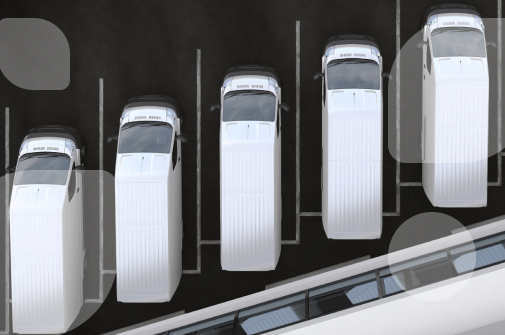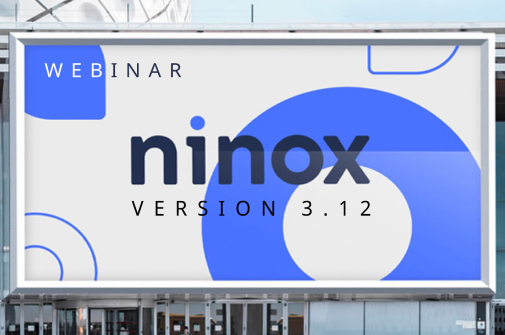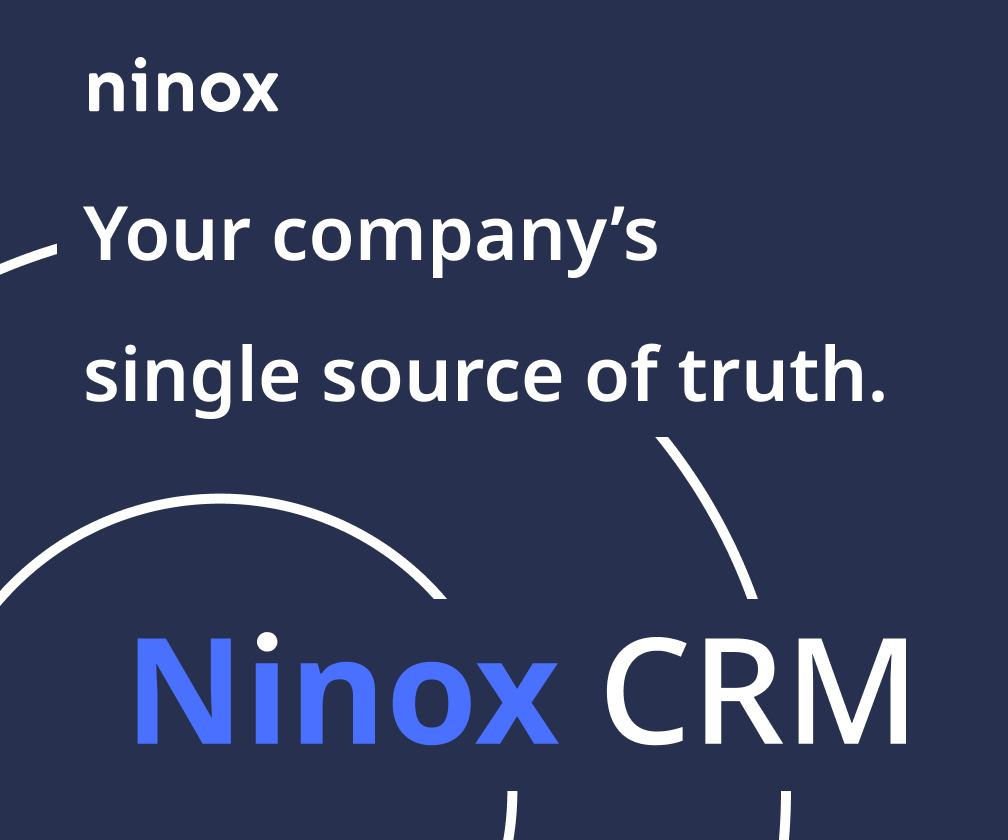Digitizing invoices: legal requirements and practical implementation guidelines

- intro
- Why is digitizing invoices important?
- The key benefits of digitizing invoices
- These invoice types can be digitized
- Is the digitization of incoming invoices legally binding?
- Digitize invoices: tax office requirements and storage requirements
- Digitize outgoing and incoming invoices with Ninox: Here's how
- Conclusion: Curb the flood of paper with digitized invoices
Digitizing invoices is an important step towards optimising business processes and meeting legal requirements. From increasing efficiency to saving costs, automating invoice processing offers numerous benefits for companies.
In this article, you will learn the most important benefits of digitizing invoices and how to implement them in practice.
Why is digitizing invoices important?
Digitizing invoices is crucial because it increases efficiency, lowers costs and streamlines processes. Through automated invoice processing, companies can save time, minimize errors and ensure more transparent accounting.
Digitalization also supports faster access to important data and supports compliance with legal requirements.
Are you looking for a software to digitally write invoices? Tips for this can be found elsewhere on our blog.
The key benefits of digitizing invoices
An automated, digital invoicing process creates countless benefits at all levels of the company. Employees can focus on more important tasks and, thanks to the right software, management doesn't have to worry about storage obligations.

We'll show you the other benefits of digitizing invoices:
Time savings:
Bookkeeping spends an incredible amount of time writing, checking, or even searching for invoices. Digital archiving saves you a lot of time because you no longer have to leaf around in paper folders. Automation features also save valuable resources during creation and verification. At the same time, search functions in the software tool make it easier to retrieve invoices more quickly.
Space savings:
Digital accounting is stored in a cloud and therefore no longer requires file folders. This saves space in the office.
Safety:
Digital invoices are better protected against unauthorized access and external influences. While paper bills are often carried around the office (or even outside), data protection suffers. Physical factors such as fire, storms, or other disasters can also destroy paper bills.
Location-independence:
You usually also have mobile access to a software tool. This means that you are not bound to a location when you want to view an invoice. This can sometimes also improve the relationship with customers, for example if you can eliminate potential misunderstandings directly during a customer appointment.
Cost savings:
With digital invoice processing, you save on personnel costs on the one hand, and on the other hand, you save money on office supplies. By using less paper, you're helping the environment at the same time.
Efficiency and structure:
Software solutions for digitizing invoices are designed to bring as much structure as possible to your accounting. You can find invoices faster, pay them out automatically and don't have to deal with annoying routine tasks. Especially an invoicing program with DATEV interface can improve your efficiency enormously.
These invoice types can be digitized
A good invoicing tool helps you to correctly digitize all types of invoices. This is because there are certain differences to consider when it comes to incoming, outgoing and paper invoices.
Digitize incoming invoices
Incoming invoices are invoices that you as a company receive from a service provider or a supplier.
If you receive the incoming invoice digitally, it is important that you save it in the same format as when you received it.

Digitize outgoing invoices
An invoicing program such as Ninox is suitable for sending digitized outgoing invoices. The invoices are securely archived directly.
The connection of Ninox to the DATEV accounting system also ensures that your invoices are GoBD compliant and that you can send them directly to your tax office or tax office.
Digitize paper invoices
If you want to digitize a paper bill, you need a scanner or an app that allows you to digitally enter receipts. In order for the invoice to actually comply with GoBD, you must comply with the procedural documentation.
Modern accounting systems perform these automatically in most cases. Only after you have considered these points can you throw away the original invoice. Otherwise, you must store the original in paper form in accordance with the storage obligation.
Requirements: When you can destroy scanned invoices
- Invoice must be easy to read.
- The digital document must contain the unchanged information on the paper bill.
- The document must be stored and available in accordance with legal requirements.
- The invoice must be saved in accordance with GoBD.
Is the digitization of incoming invoices legally binding?
Only if invoices the principles of proper computerised accounting systems comply (in short: if you are GODB compliant), they are considered legally valid. In concrete terms, this means that digitized invoices must be indexed so that they can be subject to a tax audit.
The GoBD also regulates the accuracy, completeness, security and clarity of digital invoices. In addition, you also ensure the authenticity and integrity of invoices.
When invoices are scanned, it is therefore necessary to ensure procedural documentation. In order to comply with procedural documentation, companies should rely on GoBD-compliant billing and accounting software.

Digitize invoices: tax office requirements and storage requirements
If you do not comply with the regulations of the Federal Tax Office, there is a risk of legal consequences. For example, if an invoice is scanned without procedural documentation, the input tax is not recognized. Procedural documentation includes, for example, that you record who digitized the invoice and when.
Another important obligation of the tax office is: Store incoming and outgoing invoices for 10 years. This applies to both paper and digital invoices. Therefore, when choosing your accounting system, make sure that it is a future-proof solution.
Digitize outgoing and incoming invoices with Ninox: Here's how
Would you like to effectively digitize your invoicing process? With Ninox, it's a simple process.
Digitize incoming invoices with Ninox
Start by importing your incoming invoices into the Ninox system or manually entering them. By allowing you to customize invoice templates in Ninox, you can ensure that all relevant information is properly captured.

Ninox's integration options with other systems, such as email and document management tools, allow you to automatically capture incoming invoices and optimize workflow.
Use the functions to automatically assign invoices to suppliers or projects to further simplify the process. With GoBD-compliant archiving and secure management of your invoice data in Ninox, you can digitize incoming invoices efficiently and in compliance with the law.
Digitize outgoing invoices with Ninox
To digitize your outgoing invoice, use the custom invoice templates in Ninox to create professional and tailor-made invoices.
With the DATEV interface in Ninox, you can seamlessly transfer your created invoices to your accounting system and ensure that all tax and legal requirements are met.
You can track the status of your sent invoices and set reminders to ensure payments are received on time. The automatic archiving of generated invoices enables efficient administration and quick access to all relevant documents.
5 tips for finding the right invoicing software
- Choose software that offers exactly the features you need.
- Prioritize easy-to-use software for ease of use.
- Make sure the software works seamlessly with your existing systems.
- Choose software that meets the highest safety standards and meets legal requirements.
- Choose software that offers reliable customer support and regular updates.
Conclusion: Curb the flood of paper with digitized invoices
Digitalizing invoices offers companies numerous benefits, from increasing efficiency to saving costs. By using tools such as Ninox, billing processes can be optimized and the flood of paper reduced.
With custom templates, seamless integration and secure archiving functions enable Ninox to manage your billing data efficiently and in accordance with the law. Take the step towards digitization and benefit from modern, sustainable and efficient invoice processing.






